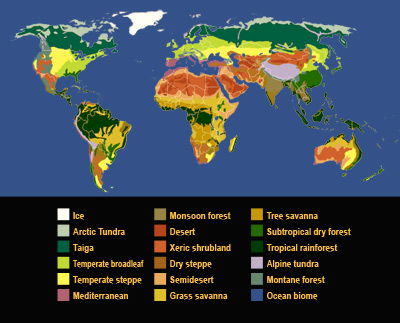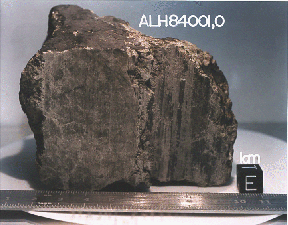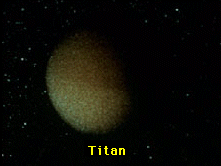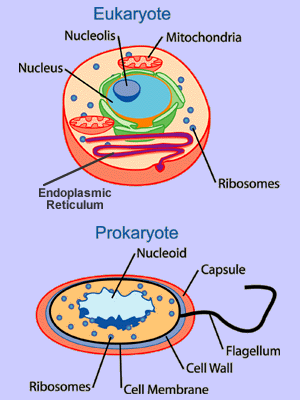This simple cartoon shows general similarities and differences between eukaryote and prokaryote cells.
Image courtesy of Windows to the Universe
Biology
Biology is the study of
life and living organisms. Biologists study the
structure of living things and how they grow. They study how they
evolve and what they do in the environment. Biologists also study where they live and
how they are related to other living things. Biologists study life from the tiniest sizes of cells to the scale of
ecosystems.
Because all things are made of chemicals, a biologist must understand chemistry to be able to understand life. Similarly, because life can effect other parts of Earth (like the atmosphere, water, and Earth's surface), many geologists must understand biology. Biogeochemists specialize in the study of how life, chemistry, and the Earth effect each other.
You might also be interested in:

This Windows to the Universe Exploratour examines the scientific evidence of biological evolution. It is available at the intermediate and advanced levels only. To travel through the tour, click the back
...more
Biomes are large areas of the world where there are similar plants, animals, and other living things. The living things are adapted to the climate. Explore the links below to learn more about different
...more
Chemistry is the study of matter, energy, and how they effect each other. Chemists study the what substances are made of and what they do, and how they react with each other. Chemists work to develop new
...more
Jupiter's atmospheric environment is one of powerful winds, going 250 miles per hour, and temperatures from -270 degrees to +32 degrees (freezing temperature). These winds make it hard for life forms to
...more
In July, 1996 a team of scientists said that they had discovered possible fossils of bacteria in a meteorite named ALH84001 that came from Mars. It was found in Antarctica in 1984 after having landed there
...more
Saturn's atmospheric environment is one of powerful winds, going 250 miles per hour, and temperatures from -270 degrees to +80 degrees. With winds like these, it is hard to have peace and quiet. The region
...more
The air of Titan is a lot like the Earth's, except that it is very cold, from -330 degrees to -290 degrees! Like the Earth, there is a lot of Nitrogen and other complex molecules. There also may be an
...more















